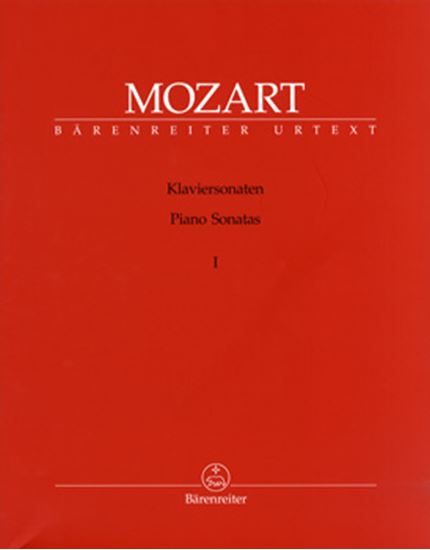Mozart, Wolfgang Amadeus : Sonate für Klavier Nr.8 D-Dur K.311 K6.284c
Work Overview
Publication Year:1781
First Publisher:Heina
Instrumentation:Piano Solo
Genre:sonata
Total Playing Time:16 min 00 sec
Copyright:Public Domain
Additional Notes:新モーツァルト全集では、ソナタ番号が旧来の「9番」から「8番」へと変更された。
Commentary (1)
Author : Okada, Akihiro
Last Updated: October 1, 2009
[Open]
Author : Okada, Akihiro
This sonata, like K.309, is believed to have been composed in Mannheim, where Mozart stayed on his way to Paris, between October and November 1777. The autograph manuscript is currently preserved in a library in Krakow, Poland.
Regarding the circumstances of this sonata's composition, the Neue Mozart-Ausgabe suggests the possibility that it was written for Juliane and Josepha, the two daughters of the Freisinger family in Munich. On the other hand, based on the argument that this sonata was completed slightly earlier than K.309, there is also a theory that it was composed for Rosa, the daughter of Cannabich in Mannheim.
In any case, it is certain, both from documentary evidence and stylistic analysis, that both sonatas were composed in the same location during the same period.
First Movement: D major, 4/4 time, Sonata Form
Similar to K.309, it begins with a powerful opening reminiscent of an orchestral tutti, followed by a light melody in piano that responds to it. The secondary theme (from m. 17) in the dominant key is characterized by the contrast between legato and staccato descending stepwise figures.
In the latter half (from m. 40), a chain of descending second intervals, which concludes the first half, continues in a sequential manner, leading through E minor and B minor before the descending figure of the secondary theme appears in G major. After a transitional passage (from m. 66) consisting of a chain of sixteenth notes, the secondary theme is first recapitulated in the tonic key (from m. 79). The main theme finally returns at m. 99, and the movement quietly concludes with descending second intervals, similar to the first half.
Second Movement: G major, 2/4 time
The opening 11-bar theme is repeated by a repeat sign, and the movement as a whole, like K.309, takes the form of a variation with an episodic theme, though the variations are very modest. After an episode in the dominant key (from m. 19) and the return of the opening theme (m. 39), the episodic theme appears in the tonic key (from m. 53). At m. 75, the opening theme returns again, and the movement concludes amidst a rich sound created by decorative variations, octave doubling of the melody, and expansion of the accompaniment's range.
Third Movement: D major, 6/8 time, Rondo
The final movement of this sonata is also a rondo, sharing the exact same structure as K.309.
It is a rondo with a light theme adorned with appoggiaturas. It is also extremely similar to K.309 in that it contains many improvisatory passages, such as continuous scales and long couplet themes.
Immediately before the third return of the rondo theme, an Eingang (a short improvisatory passage) that is usually not notated but performed improvisationally is actually written out. This is interesting from various perspectives, including performance practice.
Movements (3)
PTNA & Partner Channel Videos(7items)
Reference Videos & Audition Selections(3items)
Sheet Music
Scores List (13)

(株)全音楽譜出版社

(株)全音楽譜出版社

(株)全音楽譜出版社

(株)全音楽譜出版社

(株)音楽之友社

(株)全音楽譜出版社

ヘンレ社(ヤマハ)

(株)ヤマハミュージックエンタテインメントホールディングス









